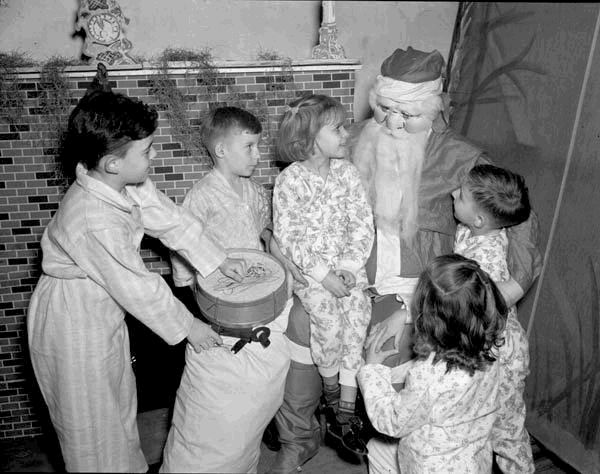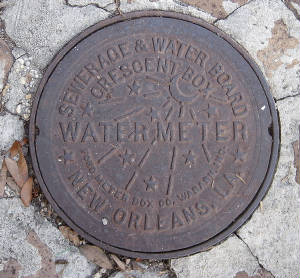|
Today in New Orleans History |
|
|
December 20




Photo - James E. Fitzmorris receives Marine Corps Certificate of Appreciation from an unidentified officer, December 20, 1957. Photograph by TSgt. Edward R. Wojciechowski, 8th Marine Corps Reserve and Recruitment District. On December 20, 1957, a month before filming of King Creole was due to begin, Elvis Presley received
his draft notice. Presley and Paramount had to request special permission to defer Presley's enlistment to
allow him to finish the film. Both pointed out to the draft board that a delay in filming would cost them a large sum of
money invested in the pre-production of the film. On December 27, Presley received a 60-day deferment, (Wiki)
On December 20, 1945 Philip P. Cazale submitted plans for a cellar addition to plant number 4 of the Falstaff Brewery at 2600 Gravier Street.
Photo - Poland Street at St. Claude Avenue while paving work is underway on December 20, 1936. Photo - St. Roch Avenue at Galvez Street before the WPA hardsurfaced St. Roch Avenue. December 20, 1936.
The Ford Meter Box Company
is a prominent manufacturer of products for the waterworks industry. Ford is headquartered in Wabash, Indiana, where it also
operates a brass foundry. Products manufactured there include water meter setting materials, valves, couplings, meter boxes,
and other fittings for the waterworks industry. Ford also has a manufacturing plant in Pell City, Alabama, where they manufacture
pipe products such as pipe tapping sleeves, repair clamps, and pipe restraints. Ford sells their products in North America
as well as worldwide, through a network of distributors. On Saturday, April 30, 1803, the Louisiana Purchase Treaty was signed by Robert Livingston,
James Monroe, and Barbé Marbois in Paris. Jefferson announced the treaty to the American people on July 4. After
the signing of the Louisiana Purchase agreement in 1803, Livingston made this famous statement, "We have lived long,
but this is the noblest work of our whole lives...From this day the United States take their place among the powers of the
first rank." The United States Senate ratified the treaty with a vote of twenty-four to seven on October 20. The
Senators who voted against the treaty were: Simeon Olcott and William Plumer of New Hampshire, William Wells and Samuel White
of Delaware, James Hillhouse and Uriah Tracy of Connecticut, and Timothy Pickering of Massachusetts. On the following day,
the Senate authorized President Jefferson to take possession of the territory and establish a temporary military government.
In legislation enacted on October 31, Congress made temporary provisions for local civil government to continue as it had
under French and Spanish rule and authorized the President to use military forces to maintain order. Plans were also set
forth for several missions to explore and chart the territory, the most famous being the Lewis and Clark Expedition. France
turned New Orleans over on December 20, 1803 at The Cabildo. On March 10, 1804, a formal ceremony was conducted
in St. Louis to transfer ownership of the territory from France to the United States. Effective on October 1, 1804, the purchased
territory was organized into the Territory of Orleans (most of which became the state of
Louisiana) and the District of Louisiana, which was temporarily under the control of the governor and judges of the Indiana
Territory. (Wiki) The first recorded use of fireworks in New Orleans was early in the 19th century. On December 20, 1803, the American flag flew over Louisiana for the first time. On that auspicious day, 27 years after independence was achieved, locals became Americans. Being the fun-loving people they were, they celebrated with military parades, fire drills by the militia, and thunderous salutes by the artillery, not to mention numerous parties, balls and general jollification evoked by the day’s excitement. The evening ended with-what else? – a loud, colorful, magnetizing fireworks display. Source: Buddy Stall at http://clarionherald.org/19991028/stall.htm |
|
|

To receive an update for each day in New Orleans history,
join our facebook page - Today in New
Orleans History.
Analytics |



 Who Makes Our Water Meter Covers?
Who Makes Our Water Meter Covers? 
